From the excess funds generated from the 2013 show we were able to make donations of £500 pounds to the following charities.
£250 was Donated to the RNLI
£250 was Donated to the Thetis Memorial Fund.. , a write up of which can be seen below, as well as pictures of the plaque unveiled 1st June 2014
£250 was Donated to the RNLI
£250 was Donated to the Thetis Memorial Fund.. , a write up of which can be seen below, as well as pictures of the plaque unveiled 1st June 2014
The Story of the Thetis
Thetis was a ‘T’ class submarine, newly designed with a forward firing set of ten 21” torpedo tubes (six internal and four external), built by Cammell Laird in Birkenhead and launched on 29 June 1938. After completion, trials were delayed because the forward hydroplanes jammed, but eventually started in Liverpool Bay under Lieutenant Commander Guy Bolus. Thetis left Birkenhead for Liverpool Bay to conduct her final diving trials, accompanied by the tug Grebecock. As well as her normal complement of 59 men she was carrying technical observers from Cammell Laird and other naval personnel, a total of 103 men. The first dive was attempted at about 14:00 on 1 June 1939. The submarine was too light to dive, so a survey of the water in the various tanks on board was made. One of the checks was whether the internal torpedo tubes were flooded.
Lieutenant Frederick Woods, the torpedo officer, opened the test cocks on the tubes. Unfortunately, the test cock on tube number 5 was blocked by some enamel paint so no water flowed out even though the bow cap was open. Prickers to clear the test cocks had been provided but they were not used. This combined with a confusing layout of the bow cap indicators — they were arranged in a vertical line with 5 at the bottom - 1,2,3,4,6, and then 5; and the shut position for tube 5 on the dial was in a different position from those of the other torpedo tubes — led to the inner door of the tube being opened. The inrush of water caused the bow of the submarine to sink to the seabed 150 ft (46 m) below the surface.
An indicator buoy was released and smoke candle fired. By 16:00, Grebecock was becoming concerned for the safety of Thetis and radioed HMS Dolphin submarine base at Gosport. A search was immediately instigated. Although the stern remained on the surface, only four crew escaped before the rest were overcome by carbon dioxide poisoning caused by the crowded conditions, the increased atmospheric pressure and a delay of 20 hours before the evacuation started. The crew had waited before abandoning the vessel until it had been discovered by the destroyer Brazen, which had been sent to search for it and which indicated her presence by dropping small explosive charges into the water.
The incident attracted legal action from one of the widows, who brought a claim of negligence against the shipbuilders, for not removing the material blocking the valve. Unfortunately for her the Admiralty successfully invoked Crown Privilege (now termed Public Interest Immunity) and blocked the disclosure of, amongst other items, 'the contract for the hull and machinery of Thetis' as evidence in court, on the basis that to do so would be 'injurious to the public interest'. The case is one of interest in English law, as the judges in this case accepted the Admiralty's claim on face value with no scrutiny, a ruling later overturned.
The Liverpool & Glasgow Salvage Association were commissioned to salvage the sunken submarine. On completion of the salvage operation the bell from Thetis was presented to the Liverpool & Glasgow Salvage Association by the Admiralty. One further fatality occurred during salvage operations, when Diver Petty Officer Henry Otho Perdue died from "the bends" on 23 August 1939. On Sunday 3 September, Thetis was intentionally grounded ashore at Traeth Bychan, Anglesey. It was the same day that war was declared. Human remains that had not already been removed by the salvage team were now brought out to a Naval funeral, with full honours.
The loss went beyond that of a submarine's crew. Among the dead were two naval constructors and several of the submarine team from Cammell-Laird; experienced designers and builders of submarines who would have been needed during the war.
The Thetis disaster was in marked contrast to the successful rescue of the survivors of USS Squalus, which had sunk off the coast of New Hampshire just a week previously.
The torpedo tubes on British and Australian submarines were afterwards equipped with a "Thetis clip", one of the modifications introduced as a result of the accident. This is a latch which allows a torpedo tube door to be opened no more than a small amount in case it is open to the sea at the bow end. Once it is clear that no flooding will occur the latch can be released and the door fully opened.
The submarine was successfully salvaged and repaired, being commissioned in 1940 as HMS Thunderbolt under the command of Lt. Cdr. Richard Crouch.
During the next 18 months, she saw service in the Atlantic: In December 1940 she was on patrol in the Bay of Biscay and on 15 December she encountered and sank the Italian submarine Capitano Raffaele Tarantini.
In the autumn of 1942, Thunderbolt was converted with her sister ships Trooper and P311 to carry two "Chariots" (a type of manned torpedo) and their crews for operations against Axis shipping in harbour, and was transferred with them to the Mediterranean in December 1942.
Their first mission, Operation Principal, was undertaken in December 1942, the three boats taking their charges to targets around the Mediterranean. Thunderbolt's objective was shipping in Cagliari, but the operation was not a success, and P311 was lost at La Maddalena, her intended target.
A second operation against Palermo harbour in January 1943 was more successful. On 2-3 January, the manned torpedoes entered the harbour and mined the ships there, sinking the cruiser Ulpio Traiano and the freighter SS Viminale.
A further mission to Tripoli harbour took place on 18 January. This was to prevent the Axis using blockships to neutralize the harbour, which was about to be occupied by the British Eighth Army.
Thunderbolt was sunk on 14 March 1943 off Sicily by the Italian corvette Cicogna, which had detected her and attacked with depth charges. All hands were lost and Thunderbolt settled to the bottom in 1,350 m of water
Thetis was a ‘T’ class submarine, newly designed with a forward firing set of ten 21” torpedo tubes (six internal and four external), built by Cammell Laird in Birkenhead and launched on 29 June 1938. After completion, trials were delayed because the forward hydroplanes jammed, but eventually started in Liverpool Bay under Lieutenant Commander Guy Bolus. Thetis left Birkenhead for Liverpool Bay to conduct her final diving trials, accompanied by the tug Grebecock. As well as her normal complement of 59 men she was carrying technical observers from Cammell Laird and other naval personnel, a total of 103 men. The first dive was attempted at about 14:00 on 1 June 1939. The submarine was too light to dive, so a survey of the water in the various tanks on board was made. One of the checks was whether the internal torpedo tubes were flooded.
Lieutenant Frederick Woods, the torpedo officer, opened the test cocks on the tubes. Unfortunately, the test cock on tube number 5 was blocked by some enamel paint so no water flowed out even though the bow cap was open. Prickers to clear the test cocks had been provided but they were not used. This combined with a confusing layout of the bow cap indicators — they were arranged in a vertical line with 5 at the bottom - 1,2,3,4,6, and then 5; and the shut position for tube 5 on the dial was in a different position from those of the other torpedo tubes — led to the inner door of the tube being opened. The inrush of water caused the bow of the submarine to sink to the seabed 150 ft (46 m) below the surface.
An indicator buoy was released and smoke candle fired. By 16:00, Grebecock was becoming concerned for the safety of Thetis and radioed HMS Dolphin submarine base at Gosport. A search was immediately instigated. Although the stern remained on the surface, only four crew escaped before the rest were overcome by carbon dioxide poisoning caused by the crowded conditions, the increased atmospheric pressure and a delay of 20 hours before the evacuation started. The crew had waited before abandoning the vessel until it had been discovered by the destroyer Brazen, which had been sent to search for it and which indicated her presence by dropping small explosive charges into the water.
The incident attracted legal action from one of the widows, who brought a claim of negligence against the shipbuilders, for not removing the material blocking the valve. Unfortunately for her the Admiralty successfully invoked Crown Privilege (now termed Public Interest Immunity) and blocked the disclosure of, amongst other items, 'the contract for the hull and machinery of Thetis' as evidence in court, on the basis that to do so would be 'injurious to the public interest'. The case is one of interest in English law, as the judges in this case accepted the Admiralty's claim on face value with no scrutiny, a ruling later overturned.
The Liverpool & Glasgow Salvage Association were commissioned to salvage the sunken submarine. On completion of the salvage operation the bell from Thetis was presented to the Liverpool & Glasgow Salvage Association by the Admiralty. One further fatality occurred during salvage operations, when Diver Petty Officer Henry Otho Perdue died from "the bends" on 23 August 1939. On Sunday 3 September, Thetis was intentionally grounded ashore at Traeth Bychan, Anglesey. It was the same day that war was declared. Human remains that had not already been removed by the salvage team were now brought out to a Naval funeral, with full honours.
The loss went beyond that of a submarine's crew. Among the dead were two naval constructors and several of the submarine team from Cammell-Laird; experienced designers and builders of submarines who would have been needed during the war.
The Thetis disaster was in marked contrast to the successful rescue of the survivors of USS Squalus, which had sunk off the coast of New Hampshire just a week previously.
The torpedo tubes on British and Australian submarines were afterwards equipped with a "Thetis clip", one of the modifications introduced as a result of the accident. This is a latch which allows a torpedo tube door to be opened no more than a small amount in case it is open to the sea at the bow end. Once it is clear that no flooding will occur the latch can be released and the door fully opened.
The submarine was successfully salvaged and repaired, being commissioned in 1940 as HMS Thunderbolt under the command of Lt. Cdr. Richard Crouch.
During the next 18 months, she saw service in the Atlantic: In December 1940 she was on patrol in the Bay of Biscay and on 15 December she encountered and sank the Italian submarine Capitano Raffaele Tarantini.
In the autumn of 1942, Thunderbolt was converted with her sister ships Trooper and P311 to carry two "Chariots" (a type of manned torpedo) and their crews for operations against Axis shipping in harbour, and was transferred with them to the Mediterranean in December 1942.
Their first mission, Operation Principal, was undertaken in December 1942, the three boats taking their charges to targets around the Mediterranean. Thunderbolt's objective was shipping in Cagliari, but the operation was not a success, and P311 was lost at La Maddalena, her intended target.
A second operation against Palermo harbour in January 1943 was more successful. On 2-3 January, the manned torpedoes entered the harbour and mined the ships there, sinking the cruiser Ulpio Traiano and the freighter SS Viminale.
A further mission to Tripoli harbour took place on 18 January. This was to prevent the Axis using blockships to neutralize the harbour, which was about to be occupied by the British Eighth Army.
Thunderbolt was sunk on 14 March 1943 off Sicily by the Italian corvette Cicogna, which had detected her and attacked with depth charges. All hands were lost and Thunderbolt settled to the bottom in 1,350 m of water
The Model Boat Convention is a non-profit organisation, run by Volunteers.
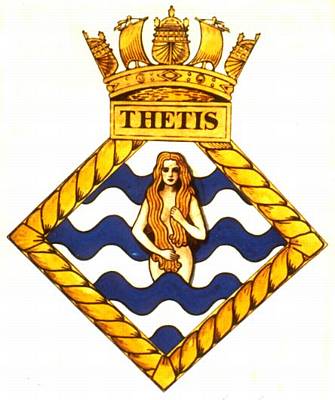
On the 1st June 2014 a memorial honouring the 99 people who died when a submarine, H.M.S Thetis sank 75 years ago has been unveiled in Merseyside .
The memorial at the Woodside Ferry Terminal, Birkenhead, was the idea of Derek Arnold, whose father, Walter, was one of only four survivors.
The memorial at the Woodside Ferry Terminal, Birkenhead, was the idea of Derek Arnold, whose father, Walter, was one of only four survivors.
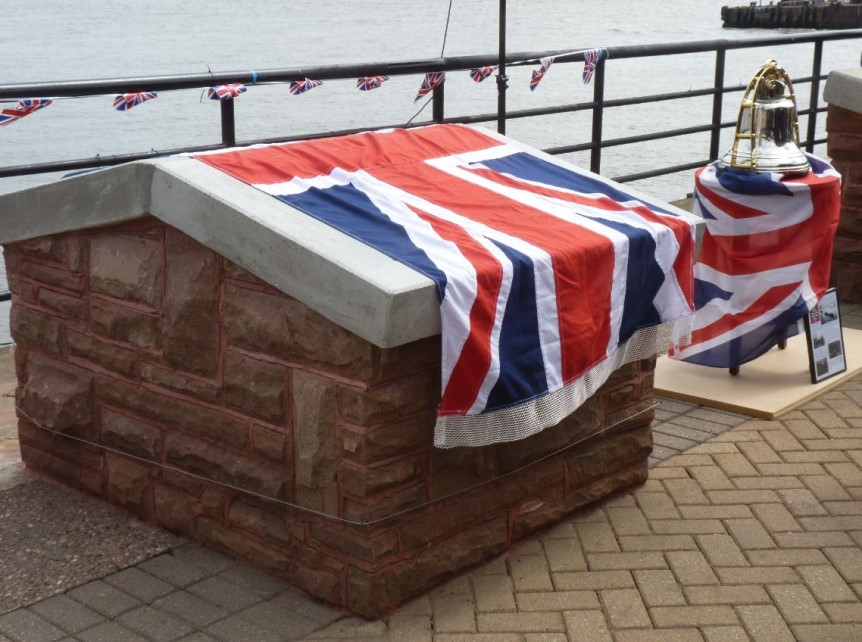
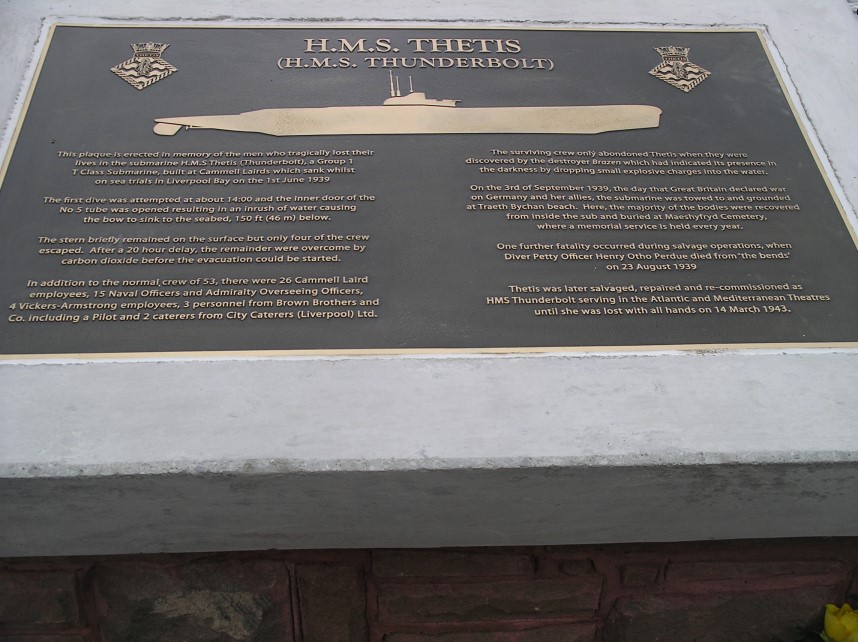
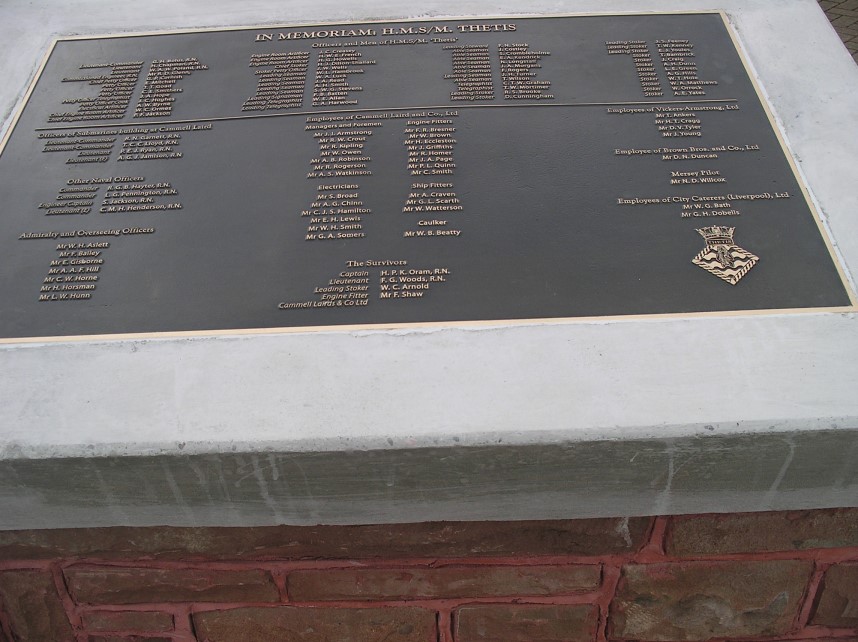
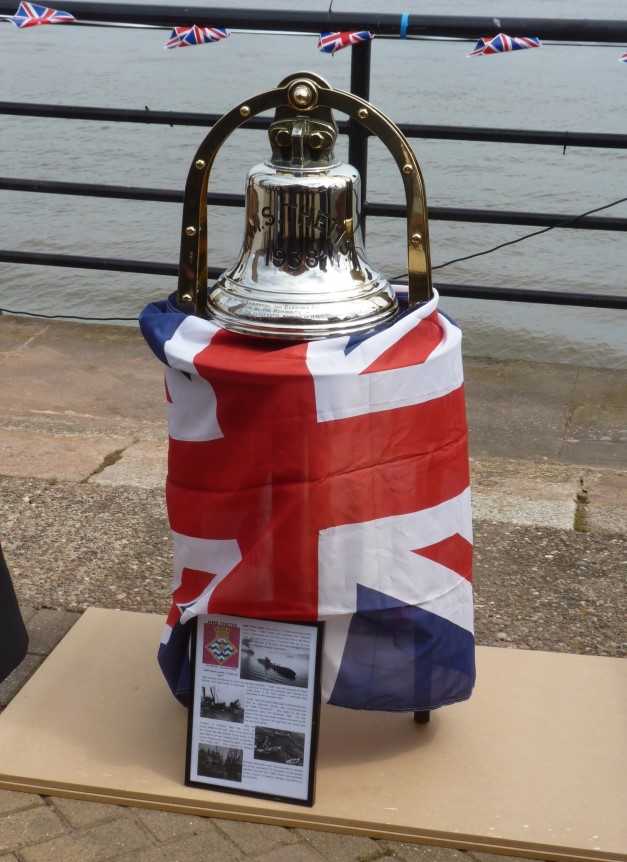
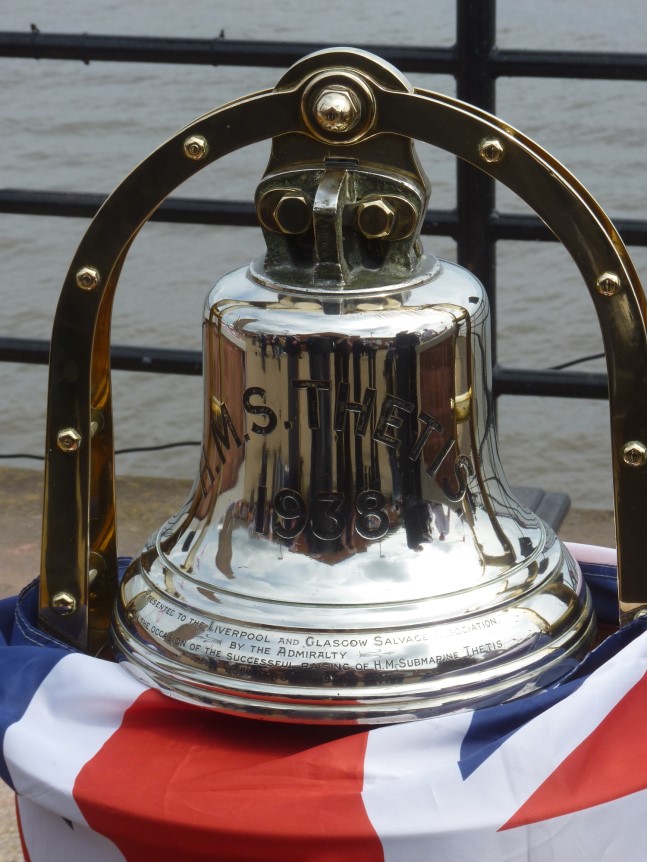
Special thanks to those who were able to attend the Ceremoney, and for the pictures.